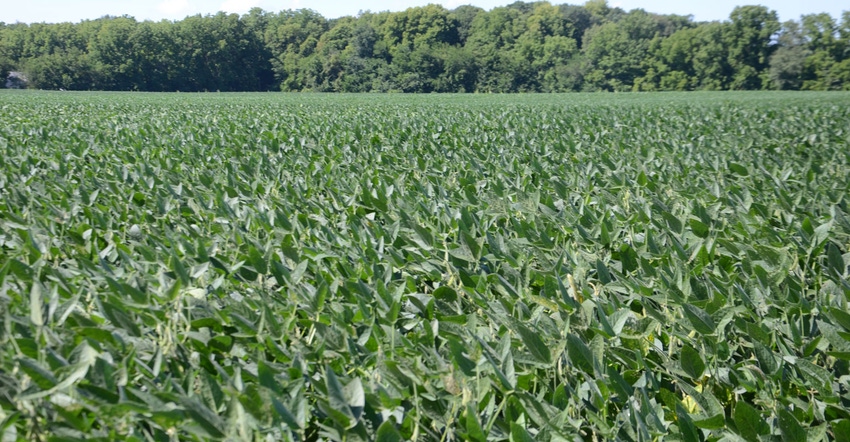
There is finally hard evidence that photosynthetic processes within food crop plants can be improved, resulting in increased yield without loss of grain quality. It’s a major step forward. Call it proof of concept: Scientists know that if they can make photosynthesis more efficient, plants yield more.
A collaborative team of worldwide researchers, led by scientists at the University of Illinois, report this achievement. It’s part of a research effort called Realizing Increased Photosynthetic Efficiency, which has been underway for over a decade. RIPE’s goal is increasing global food production by improving photosynthetic efficiency in food crops for small-holder farms in sub-Saharan Africa.
The researchers found success through multi-gene bioengineering. They started with tobacco, a non-food crop, because the process was much less complex. Successful with tobacco, they then tackled soybeans.
Technically speaking, they altered the VPZ construct that contains three genes, coding for proteins in the xanthophyll cycle. This pigment provides photo-protection for plants in full sunlight, dissipating excess energy. In nature, it takes several minutes for plants to switch the process on and off. By overexpressing these genes, researchers sped up switching. Over an entire growing season, extra time devoted to photosynthesis adds up. Researchers measured a 20% yield increase. See ripe.illinois.edu.
Data-driven decisions
Ron Baruchi and Saji Katz of Agmatix use computer software and research learning to combine various data sets related to specific crop problems collected from farmer and research trials into a format that makes results meaningful. At the same time, computer modeling identifies common factors behind a disease or nutrient trend.
Their technology is helping Midwestern university researchers better predict where sudden death syndrome may occur in soybeans. An Agmatix model developed from combined university data helps predict how severe SDS will be, with 78% accuracy. Meanwhile, Agmatix helped overseas researchers predict how much nitrogen will wind up in corn grain. Visit agmatix.com. See Startup harvests field trial data for better decisions.
Why early planted soybeans yield more
Fred Below at the University of Illinois told Farm Progress editor Willie Vogt there are sound reasons for planting soybeans earlier. No. 1: They yield more.
Why? Below says it’s simple biology. Planting earlier lengthens the growing season, allowing plants to capture more sunlight over time.
Steve Gauck, a regional agronomy manager for Beck’s, Greensburg, Ind., says it’s about growing a bigger factory — bigger plants can produce more nodes and pods. Below demonstrated the concept at a recent field day, comparing plants from early May and early June plantings. The earlier-planted soybeans had 21 nodes, versus 12 on the later-planted soybeans. Below says one more soybean pod per plant adds 2 bushels per acre. See Why do early soybeans yield better?
Short corn could yield more
Bayer is developing short-stature corn, with hybrids tested in Fred Below’s high-yield plots. Below, professor of plant physiology at the University of Illinois, was once skeptical, but is now excited, he says.
Small-stature corn has shorter internodes, especially lower in the canopy. Below believes that means plants have more energy to put into ears. He calculated the harvest index for conventional vs. short-stature corn in his plots. It’s a measure of plant efficiency, which compares crop-to-plant biomass. Conventional corn was at 52%, compared to 56% for short-stature corn. That’s significant, he says. See Corn short on height but long on yield.
Cloud-based bookkeeping
If you keep your farm accounts on paper, Tanner Hoffman, general manager for small-business growth at Xero, would like to talk to you. Xero is a cloud-based accounting system. Some of its clients work with farmers — sometimes just using the cloud to store farm information for safekeeping. However, others use the cloud-based option for farm accounting, and many allow their accountant to have access.
Having your farm information in a cloud-based system and available on your smartphone can simplify farm management decisions. For example, if you’re considering buying a farm, you could share information electronically with your bank to speed up the loan application process. Learn more at xero.com. See Better bookkeeping via the cloud.
About the Author(s)
You May Also Like




